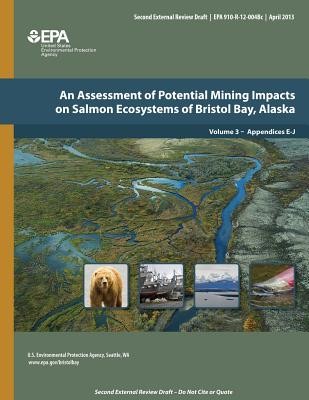
- We will send in 10–14 business days.
- Author: U S Environmental Protection Agency
- Publisher: CreateSpace Independent Publishing Platform
- Year: 2014
- Pages: 430
- ISBN-10: 1500696897
- ISBN-13: 9781500696894
- Format: 21.6 x 28 x 2.2 cm, softcover
- Language: English
- SAVE -10% with code: EXTRA
An Assessment of Potential Mining Impacts on Salmon Ecosystems of Bristol Bay, Alaska (e-book) (used book) | bookbook.eu
Reviews
Description
The objective of this report is to characterize the baseline levels of economic activity and related ecosystem services values for the Bristol Bay wild salmon ecosystem. The overarching purpose of this report is to provide baseline economic information to the Environmental Protection Agency in order to inform review of mining proposals in the Nushugak and Kvichak drainages. Both regional economic significance and social net economic accounting frameworks are described in this report. This study reviews and summarizes existing economic research on the key sectors in this area and reports findings based on original survey data on expenditures and net benefits. This report combines efforts on the part of Bioeconomics, Inc. and the University of Alaska Institute of Social and Economic Research. John Duffield and Chris Neher compiled the report and authored the executive summary, Sections 1, 2, and 5. Gunnar Knapp wrote Section 3 (commercial fisheries), and Tobias Schwörer, Ginny Fey and Scott Goldsmith wrote Section 4. The major components of the total value of the Bristol Bay area watersheds include subsistence use, commercial fishing, sport fishing and other recreation, and the preservation values (or indirect values) held by users and the U.S. resident population. The overall objectives of this study is to estimate the share of the total regional economy (expenditures, income, and jobs) that is dependent on these essentially pristine wild salmon ecosystems and to provide a preliminary but relatively comprehensive estimate of the total economic value (from an applied welfare economics perspective) that relies on a healthy ecosystem.
EXTRA 10 % discount with code: EXTRA
The promotion ends in 15d.21:13:51
The discount code is valid when purchasing from 10 €. Discounts do not stack.
- Author: U S Environmental Protection Agency
- Publisher: CreateSpace Independent Publishing Platform
- Year: 2014
- Pages: 430
- ISBN-10: 1500696897
- ISBN-13: 9781500696894
- Format: 21.6 x 28 x 2.2 cm, softcover
- Language: English English
The objective of this report is to characterize the baseline levels of economic activity and related ecosystem services values for the Bristol Bay wild salmon ecosystem. The overarching purpose of this report is to provide baseline economic information to the Environmental Protection Agency in order to inform review of mining proposals in the Nushugak and Kvichak drainages. Both regional economic significance and social net economic accounting frameworks are described in this report. This study reviews and summarizes existing economic research on the key sectors in this area and reports findings based on original survey data on expenditures and net benefits. This report combines efforts on the part of Bioeconomics, Inc. and the University of Alaska Institute of Social and Economic Research. John Duffield and Chris Neher compiled the report and authored the executive summary, Sections 1, 2, and 5. Gunnar Knapp wrote Section 3 (commercial fisheries), and Tobias Schwörer, Ginny Fey and Scott Goldsmith wrote Section 4. The major components of the total value of the Bristol Bay area watersheds include subsistence use, commercial fishing, sport fishing and other recreation, and the preservation values (or indirect values) held by users and the U.S. resident population. The overall objectives of this study is to estimate the share of the total regional economy (expenditures, income, and jobs) that is dependent on these essentially pristine wild salmon ecosystems and to provide a preliminary but relatively comprehensive estimate of the total economic value (from an applied welfare economics perspective) that relies on a healthy ecosystem.


Reviews